Best Car Wash and Auto Detailing Near Me
46 DIY Car Detailing Tips That Will Have You Detailing Your Car like a Pro
Get your vehicle looking like new with these simple interior and exterior car detailing tips that you can do yourself.
Every editorial product is independently selected, though we may be compensated or receive an affiliate commission if you buy something through our links. Ratings and prices are accurate and items are in stock as of time of publication.
1 / 47
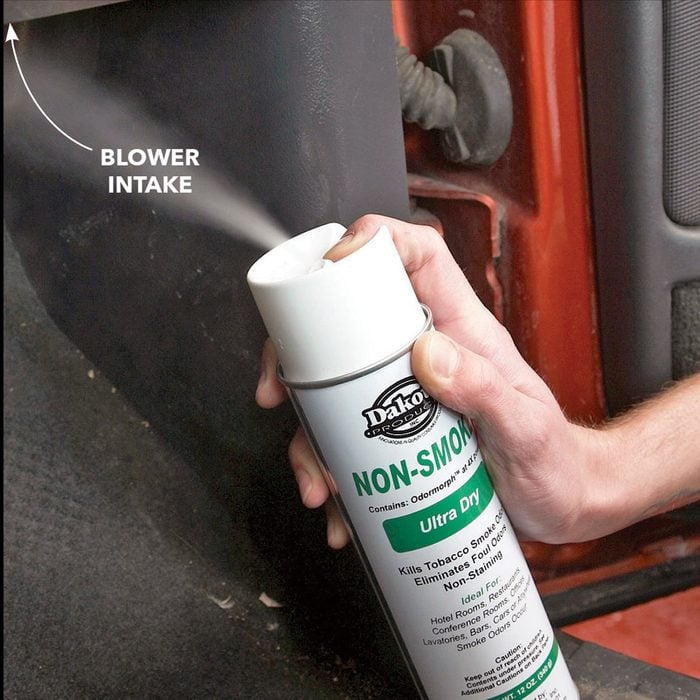 Family Handyman
Family Handyman
Best Way to Clean a Car: Destink the Interior
To neutralize tobacco smoke, buy an aerosol can of Dakota Non-Smoke. Holding the can 12 to 14 in. away from fabrics, lightly spray the headliner (don't soak it), seats, door panels and carpet. Then turn the fan to high and switch the system to recirculate mode ("max. A/C" if you don't have that option). Find the intake opening by holding a tissue near the blower motor. Then spray the mist into the opening. Leave the windows closed for at least one hour. Your vehicle will smell like baby powder for a while, but that'll go away. You can also change your car's air filter once this is done. Plus: If you have a bad smell in your house, we'll show you how to fix it.
2 / 47
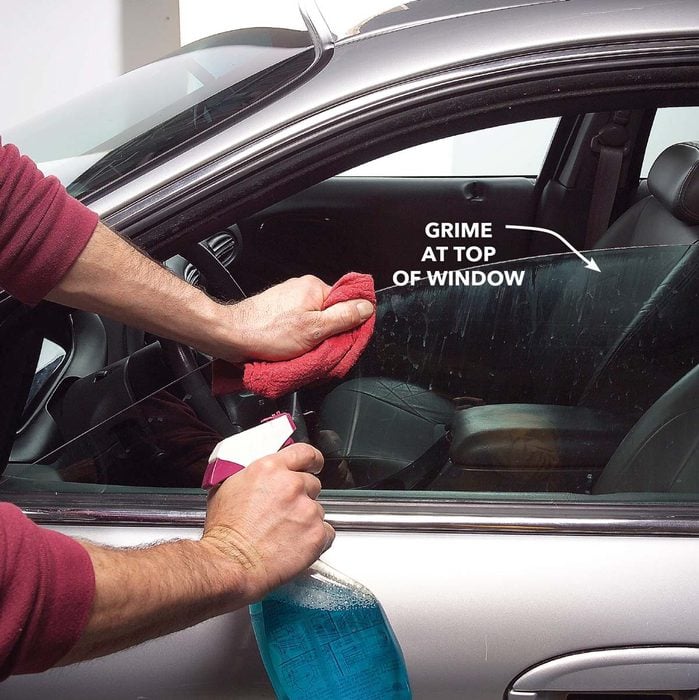 Family Handyman
Family Handyman
Best Way to Clean a Car: Wash the Windows, Including the Top Edges
Ever notice that line of grime on the tops of windows when they're partially rolled down? Most people overlook this detail when giving their vehicle a quick wash. A few minutes with Windex and a clean rag is all it takes. Power windows not working? There's an easy repair.
3 / 47
Watch this video to see some of our favorite DIY car detailing tips in action:
4 / 47
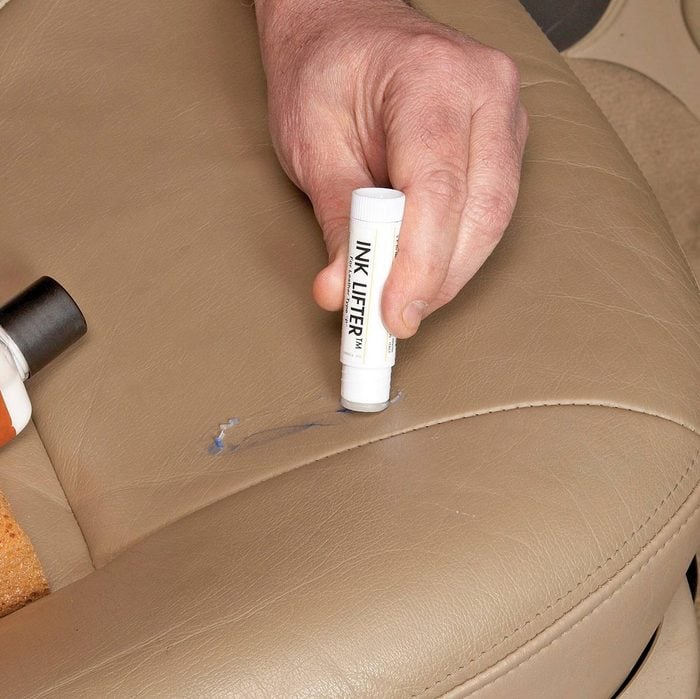 Family Handyman
Family Handyman
Best Way to Clean a Car: Clean the Leather
This may sound extreme, but if you've got leather upholstery, buy a leather-cleaning kit and keep it in the vehicle (one brand is Leather Master Leather Care Kit with Ink Lifter). Because, if you clean the oops right away, you really increase your chances of a complete cleanup. If you wait, lipstick, ink and dye transfers from clothing (and plastic shopping bags) can set permanently in as little as 24 hours. Pretreat the leather with a conditioner before you start the stain removal process. Wipe the ink lifter directly on the pretreated leather and rub it in. Let it sit for 30 seconds, and wipe it with a clean cloth. Then apply leather cleaner and the leather protection cream.
5 / 47

Lubricate Hood Hinges
Wipe the hinge area with a clean rag and spray it with white lithium grease or a few drops of ordinary motor oil. Move the hinge several times to work the grease into the hinge. Be sure to get it into both sides of each hinge. Wipe away the excess to keep it from collecting debris.
6 / 47
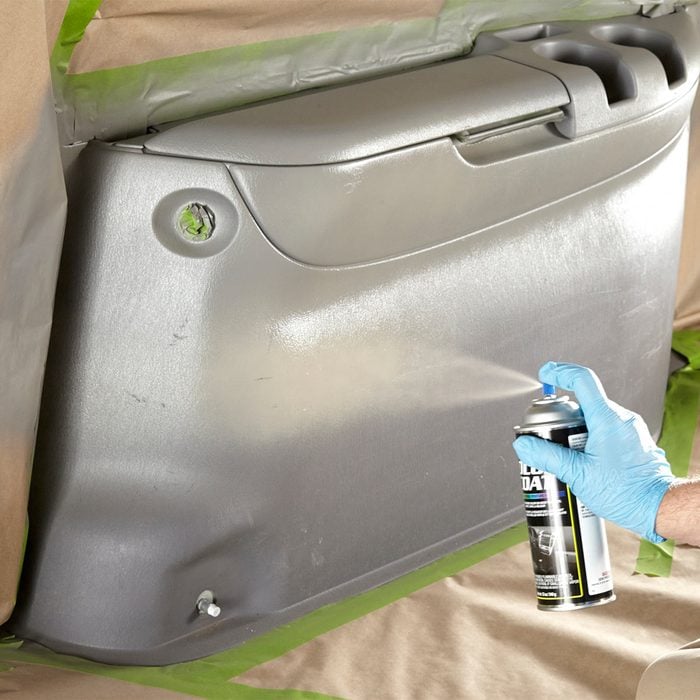
Plastic and Vinyl Colorant
7 / 47
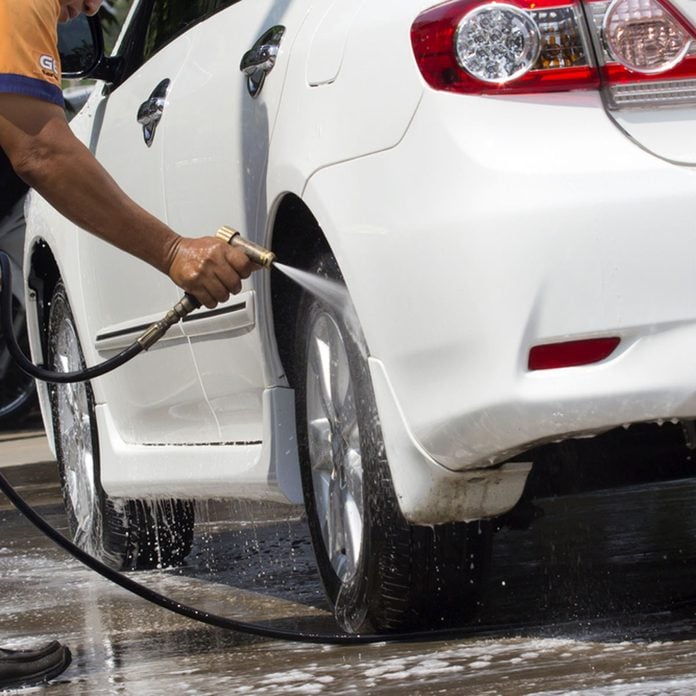 WathanyuSowong/Shutterstock
WathanyuSowong/Shutterstock
Best Way to Wash a Car: Rinse Before Washing
If you hit your dry paint with soapy water, you'll just grind the surface dust and road grit into your paint finish. Professional detailers always start with a clear water rinse to remove as much dust and dirt as possible.
8 / 47
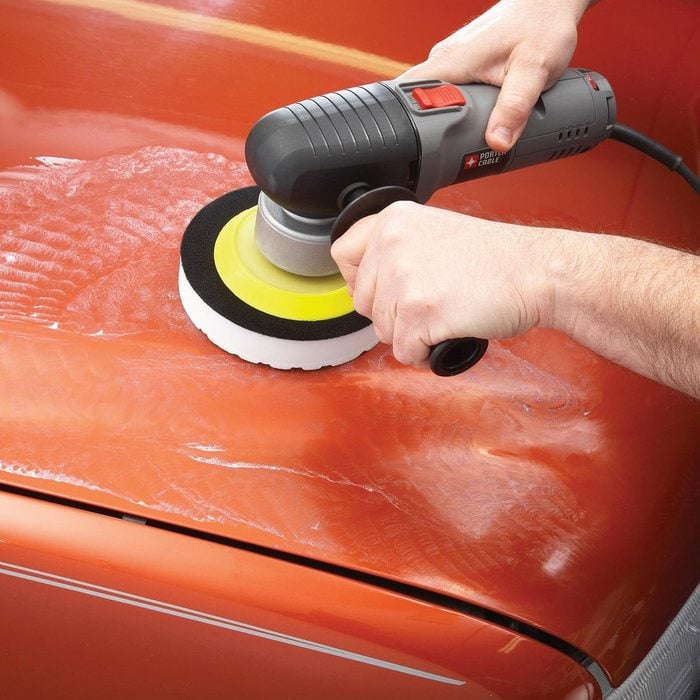 Family Handyman
Family Handyman
Best Way to Clean a Car: Polish the Finish
Many car owners confuse polishing with waxing. But they're separate steps. Polishing removes small surface imperfections and scratches and buffs the finish to a shine. Waxing adds more gloss and protects the finish from the elements. Most DIYers skip polishing because they don't want to invest the money for a polisher or the elbow grease for a hand polish. But polishing your vehicle's finish is the key to getting the best gloss (pros would never skip it). Apply a dollop of polish to the pad and wipe the pad across a 2 x 2-ft. area. Run the polisher at a slow speed to spread the compound over the entire area for the best car cleaner. Then boost the speed and let the polisher do the work for you.
9 / 47
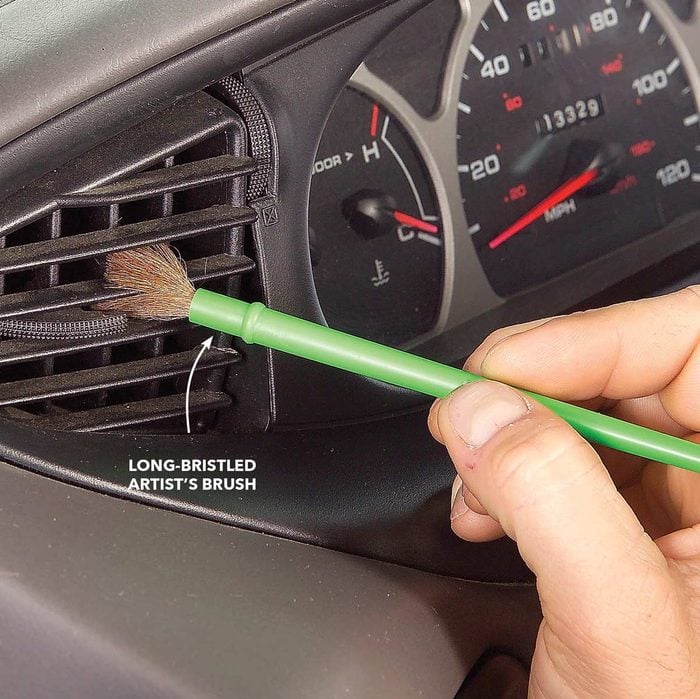 Family Handyman
Family Handyman
Best Way to Clean a Car: Brush Out the Air Vents
These louvers are a real magnet for dust, and a vacuum with a brush attachment just won't get it all. Take an inexpensive artist's paintbrush and give it a light shot of furniture polish. Work the brush into the crevices to collect the dust. Wipe the brush off with a rag and move on to the next one. Click here for more car maintenance tips.
10 / 47
 Family Handyman
Family Handyman
Best Way to Clean a Car: Deep-Clean Carpet and Upholstery
Use a carpet cleaning machine to get the deep dirt that settles into the fibers of the carpet. (Clean cloth seats this way as well.) It sprays the carpet with a solution of water and cleaner and then sucks the dirt and grime into a reservoir. A machine like this pays for itself after just a few uses. You can also rent one from a rental center or use a spray-on cleaner and a scrub brush instead.
11 / 47
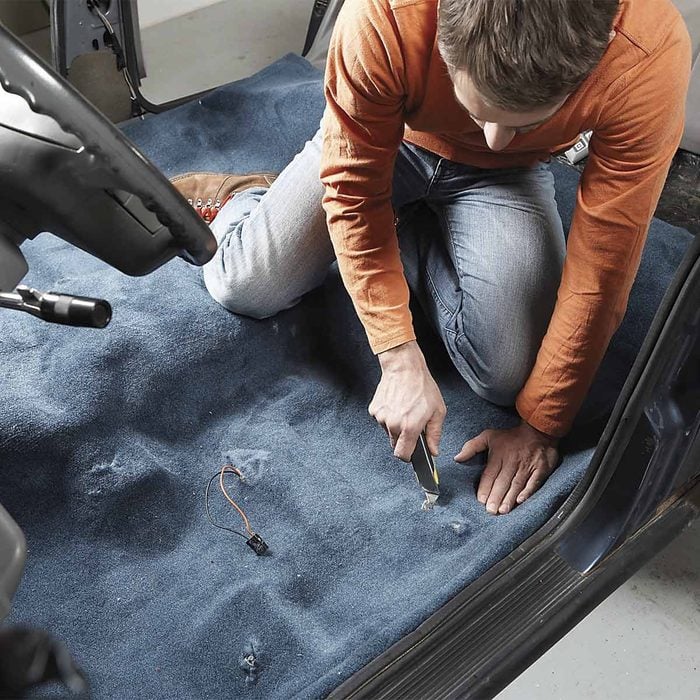
Replace the Carpet in Your Vehicle
You got a great deal on a "preowned" vehicle, but the carpeting in the car is simply a disaster. It's too far gone for stain removers—new carpeting is the best solution. You can buy preformed carpet specifically for your car's make, model and color and install it yourself. In most cases, it'll only cost about $200 and take an afternoon to install. Click here to learn how to do it.
12 / 47
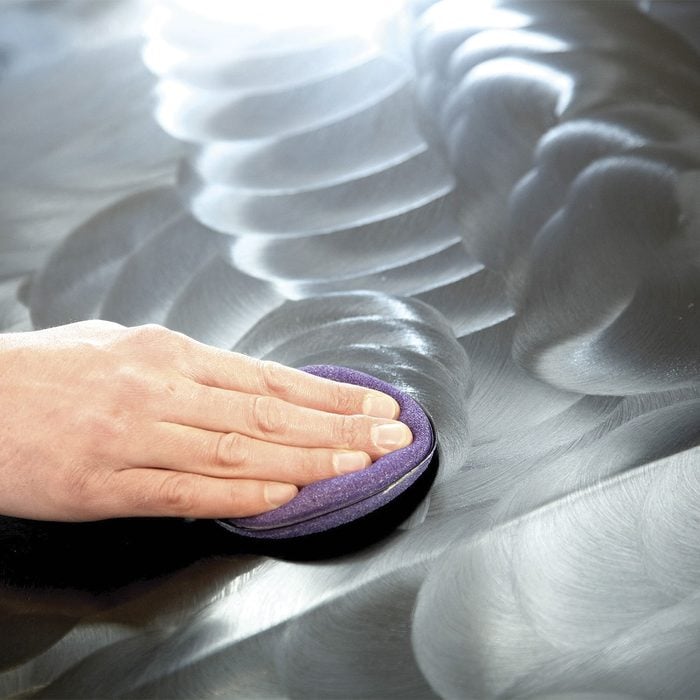
Apply Paint Sealant Yourself
13 / 47
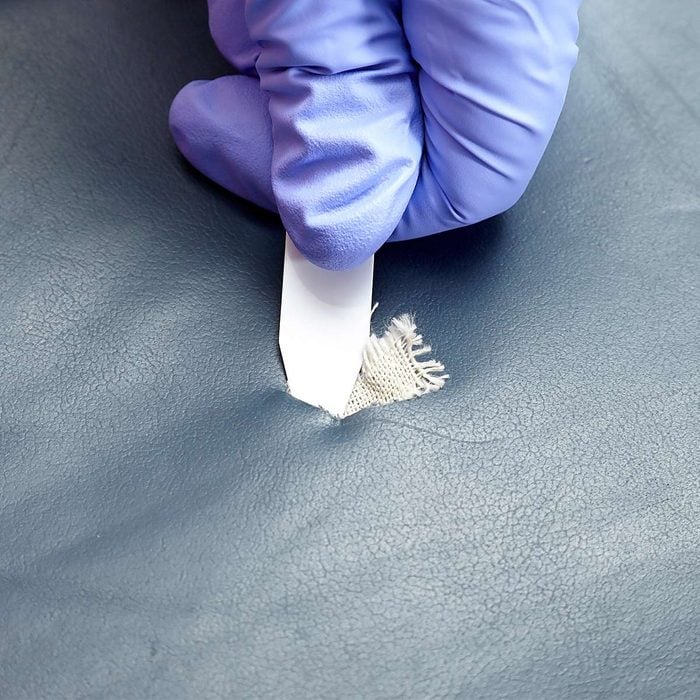
Fix Tears in Leather Seats
14 / 47

Clean the Hood Latch
15 / 47
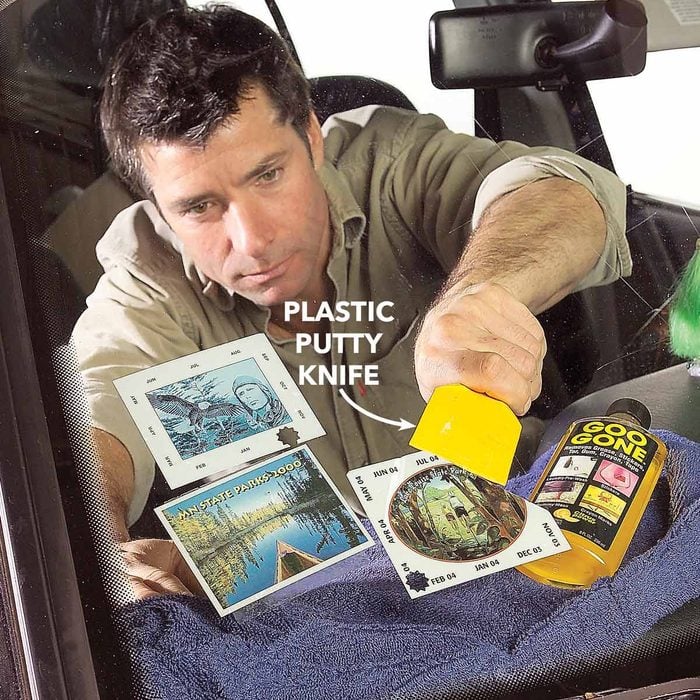 Family Handyman
Family Handyman
Best Way to Clean a Car: Scrape Off Those Annoying Stickers
All of your national and state park stickers may call to mind great memories, but they can be a visual hazard as they accumulate. The high-quality stickers will pull off if you can get under a corner and carefully pull them free at a 90-degree angle. Others will leave a gummy residue and require a bit more attention. Cover your dash with an old towel and dab on a degreaser like Goo Gone. Then scrape and wipe it off.
16 / 47
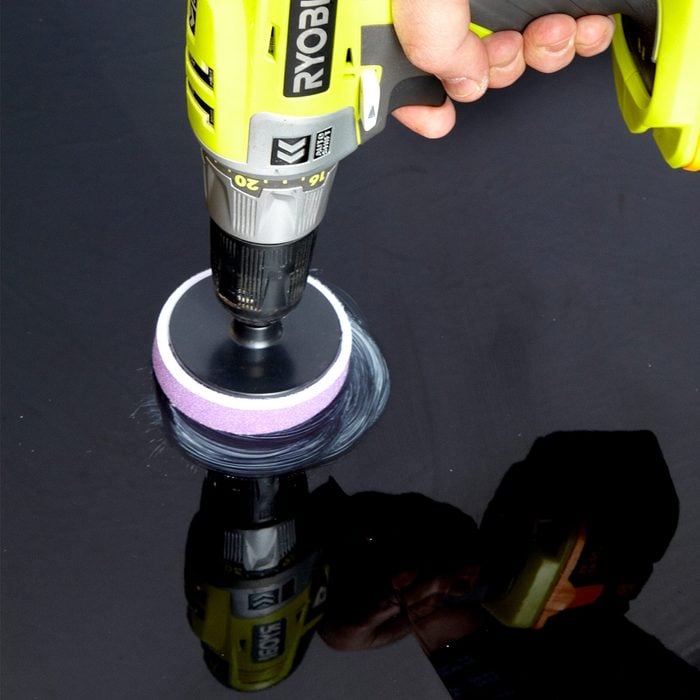
Remove Minor Paint Scratches
18 / 47
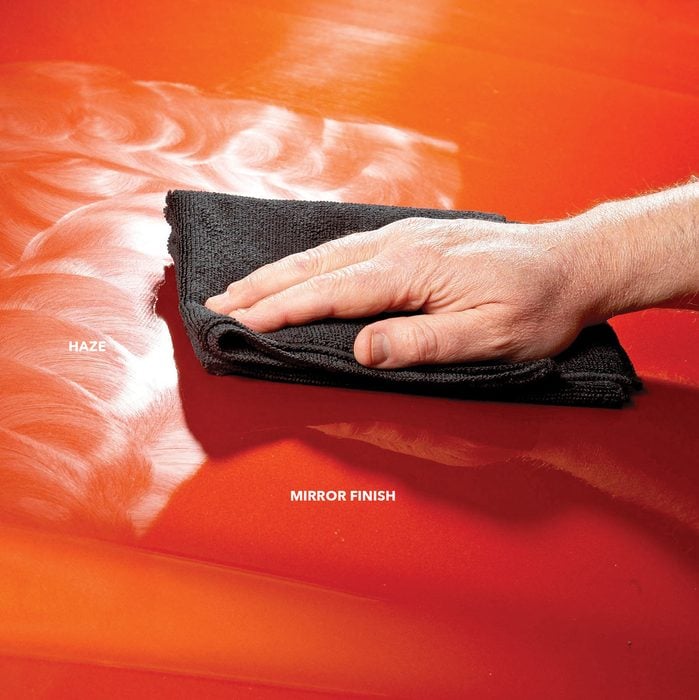 Family Handyman
Family Handyman
Best Way to Clean a Car: Get a Mirror Finish With Synthetic Wax
Some people swear by carnauba wax. It produces a deep, warm shine. But we prefer the wet-gloss look of the newer synthetic polymer waxes (also known as paint sealant) such as Meguiar's Ultimate Liquid Wax. It's pricier than other synthetics, but it doesn't leave a white film on plastic or trim—which is a real advantage. Plus, it's really easy to apply. Apply the wax to the foam applicator and rub it into the finish with a swirling motion. Then wipe off the haze with a microfiber towel. Swap in a clean towel as soon as the first one loads up for one of our clever car tricks.
19 / 47

Eliminate squeaky doors
If the door squeaks every time you open it, the hinges could be bound by corrosion. If so, squirt the hinges with WD-40 to free them, and move the door several times to work in the lubricant. Once the hinges are in working condition, just squirt them with white lithium grease or motor oil, operate the door several times and then wipe any excess away. Check the door latch for corrosion. Many door latches now have a nonmetallic composite mechanism, which should be lubricated with a shot of silicone spray.
20 / 47
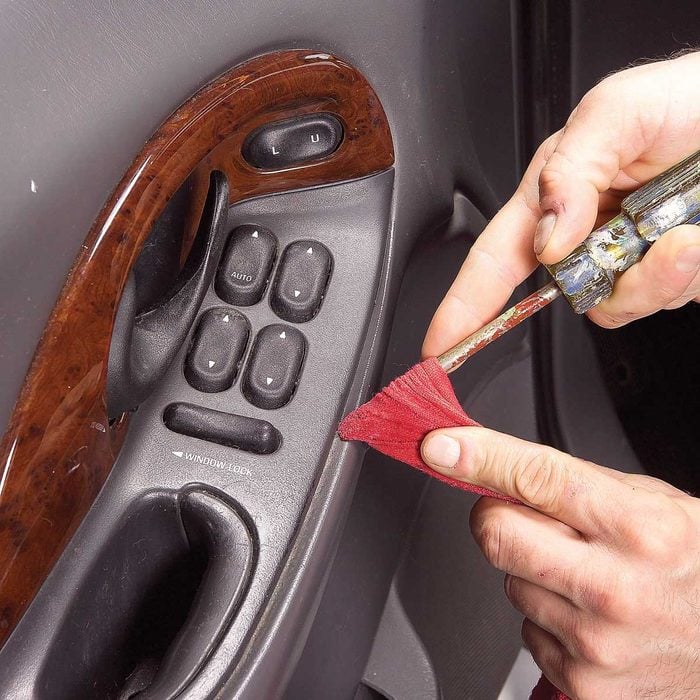 Family Handyman
Family Handyman
Remember to Clean Nooks and Crannies
Detailing means just that—finding and dealing with all the trim lines and recesses that a quick once-over cleaning job misses. Wrap a cloth around an old, worn screwdriver (without sharp edges) and spray Simple Green or other all-purpose cleaner on the cloth. Move it gently along the trim lines to pick up the gunk. Keep refreshing the surface of the cloth. Go around all the buttons and controls as well. Follow up with a rejuvenator like Armor All. Grab one of the 10 best car cleaning kits to help get you started.
21 / 47
Forget the Sponge, Use a Microfiber Mitt
Sponges capture and hold dirt and grit in their large pores. You can wring it out, but the grit will stay put when car cleaning. Once grit is embedded, you may as well wash your car with sandpaper. Detailers use a microfiber car wash mitt because the grit falls out when you rinse, it'll make a do it yourself car wash that much better.
22 / 47
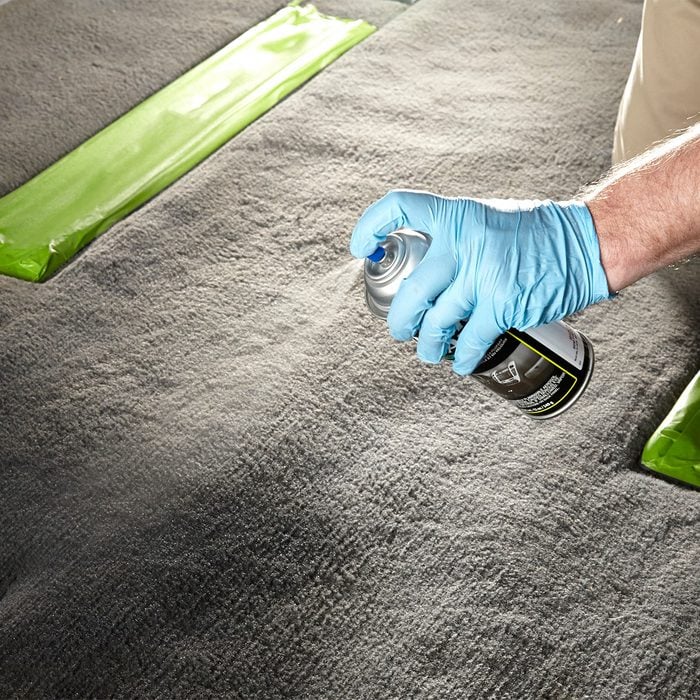
Wash Carpet and Velour
Spray Plastic & Leather Prep on the carpet or velour and scrub lightly with a nylon bristle brush. Let dry and vacuum.
23 / 47
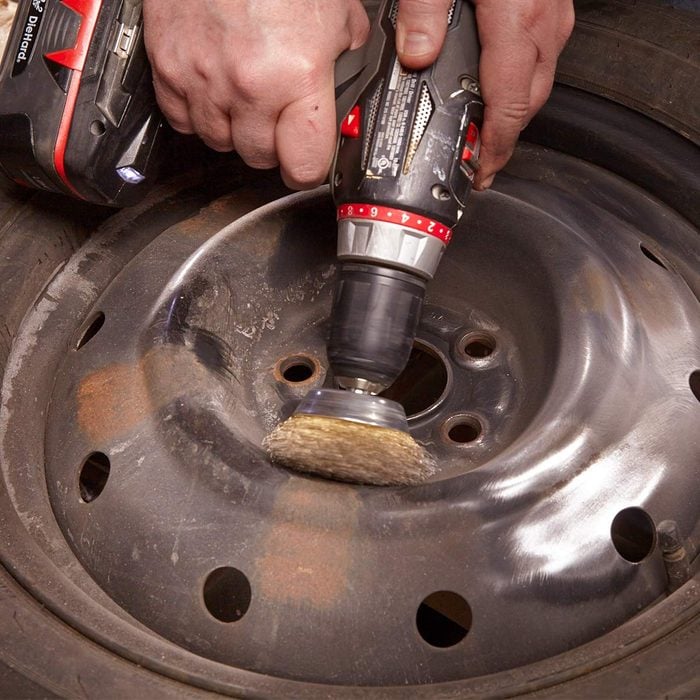
Refinish Wheels
Sometimes a middle-aged car can still look fine except for wear and tear on the wheels and wheel covers. Fortunately, you can fix this yourself for little cash. Removing the rust and painting your wheels take a full day. (Don't panic—mostly you're waiting for paint to dry.) Then the wheels must dry for 24 more hours after painting before you remount them. Here's how to do the job.
24 / 47
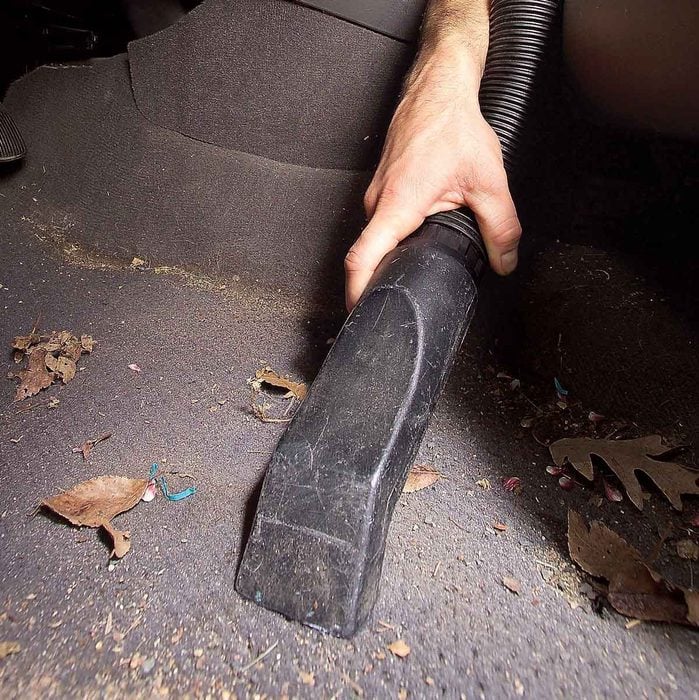 Family Handyman
Family Handyman
Best Way to Clean a Car: Slide Seats Forward and Clean Out the Junk
You'll be surprised by what you find behind the seats. We found a lost cell phone, enough pens and pencils to equip a small office, and enough change for several vending machine lunches. Vacuum the seats, remove the mats and vacuum the carpet. Use a brush attachment for the dash and door panels. Don't forget to clean out and vacuum those handy door pockets (another source of buried treasure). Learn how to get the best vacuum for the job.
25 / 47
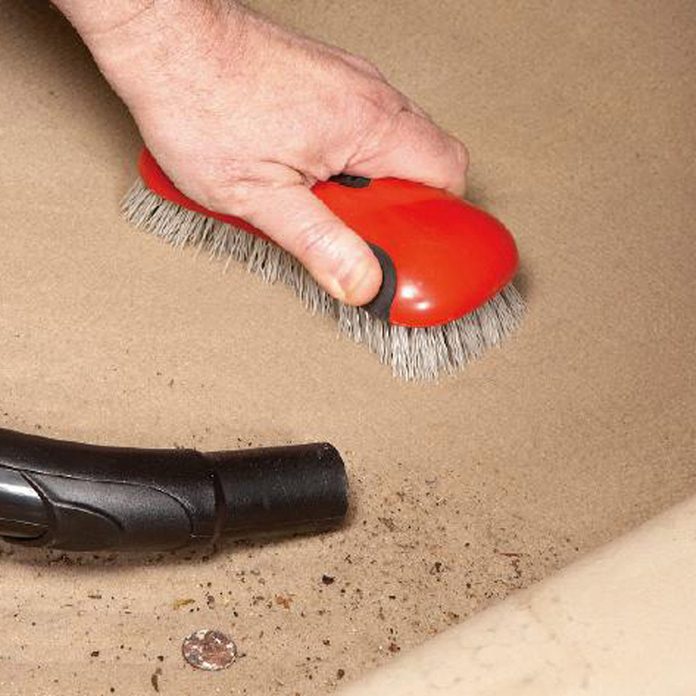
Brush and Vacuum Your Carpet
Automotive carpet doesn't like to let go of dirt when you're car cleaning. If you just vacuum it, you'll leave plenty behind. To remove more dirt, detailers use a stiff brush and scrub the carpet as they vacuum. You'll see the dirt particles bounce to the surface so you can suck them up with your shop vacuum as part of your auto detailing.
26 / 47
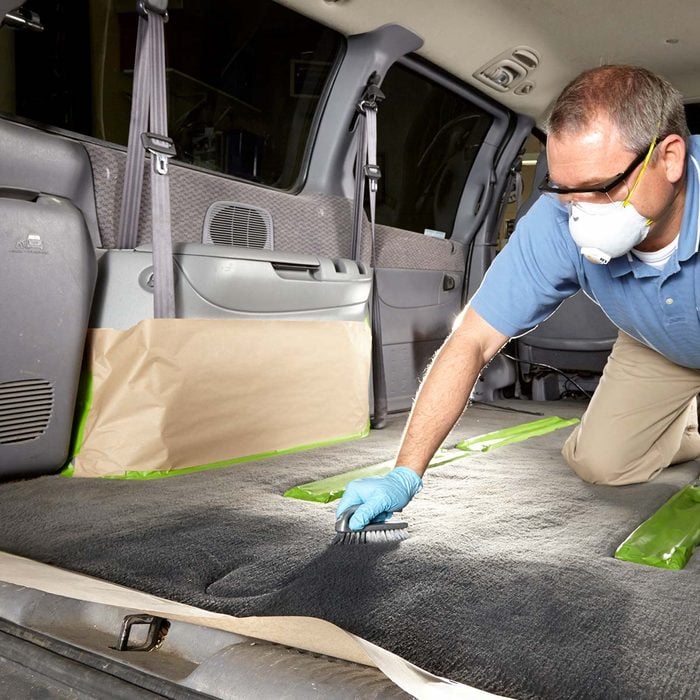
Carpet and Velour Colorant
27 / 47
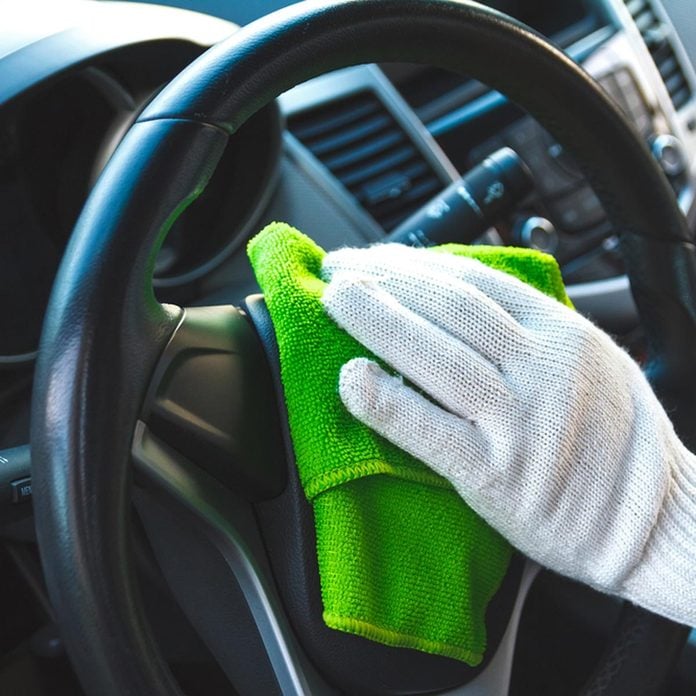 perfectlab/Shutterstock
perfectlab/Shutterstock
Start at the Top
DIYers usually start by vacuuming the carpet when car cleaning. That just pushes dirt from the dash, seats and door panels back onto your freshly cleaned carpet. Professional detailers start at the top and work their way down to the carpet when detailing cars.
28 / 47
 Family Handyman
Family Handyman
Best Way to Clean a Car: Suck Up the Dust As You Go
Most DIYers start cleaning the interior by shampooing the carpet. That's a mistake—you'll just get it dirty again as you clean the upper surfaces. Instead, try our car tricks and start at the top and work your way down. Vacuum the headliner, dash, console and door panels. Then clean all the glass, and dust the nooks and crannies. Sweep the dust out of the cracks with a detailing brush. Catch all that crud right away with your vacuum. Learn more about how to clean and restore your car's interior.
29 / 47
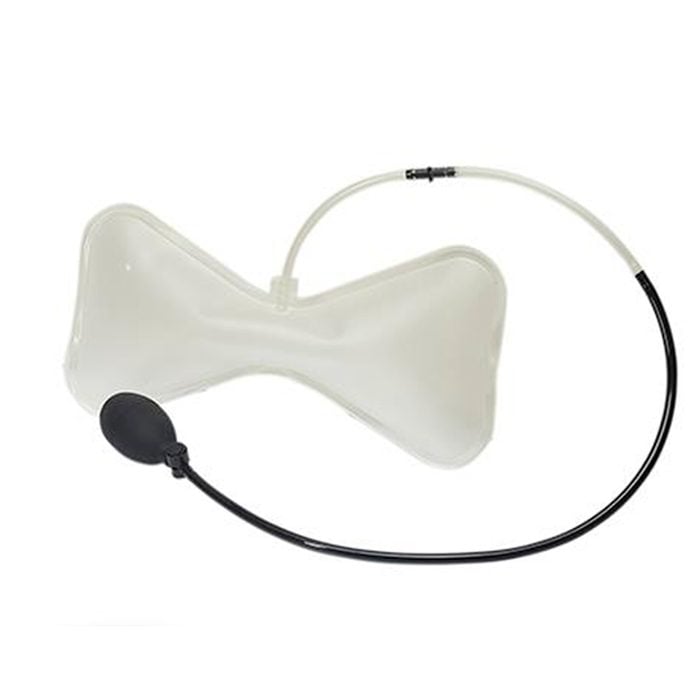
Add lumbar support
If you want lumbar support, slide this unit under the seat back cover before strapping it in place. Route the pump and tube out to the side. Once the seat covers are fully installed, adjust the firmness with the pump.
30 / 47
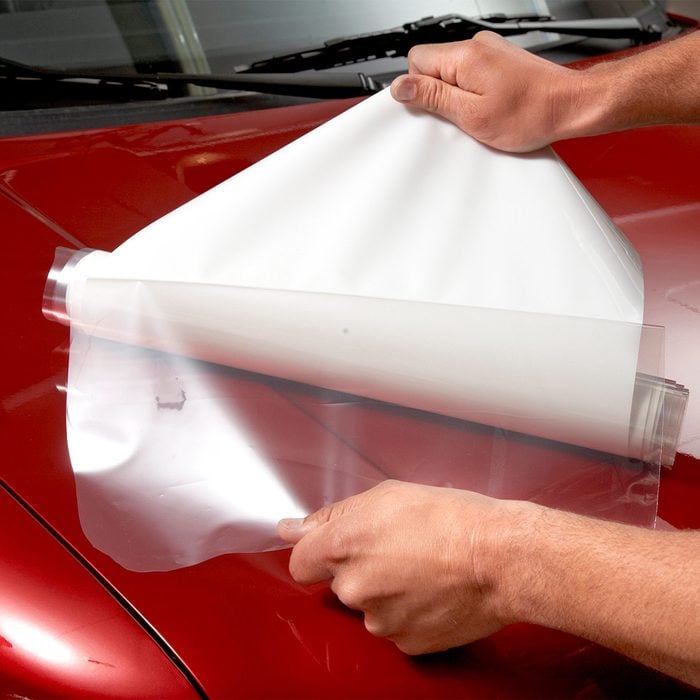
Apply a protective film
The low-slung hoods and aerodynamic side mirrors on new cars are extremely vulnerable to paint chips from flying road debris. To protect the paint, dealers apply a thin, clear, rubbery paint film over those surfaces. The film really reduces paint chip damage, but dealers charge about $400 for it. You can buy the film online and install it yourself in a few hours for about $120 (or less, depending on the size of the vehicle). It's not complicated, but it does take practice. So purchase an extra set of film for your mirrors and try it with them first. Once you get the hang of wetting, stretching and squeegeeing the film around your mirror, you'll find the hood much easier.
31 / 47
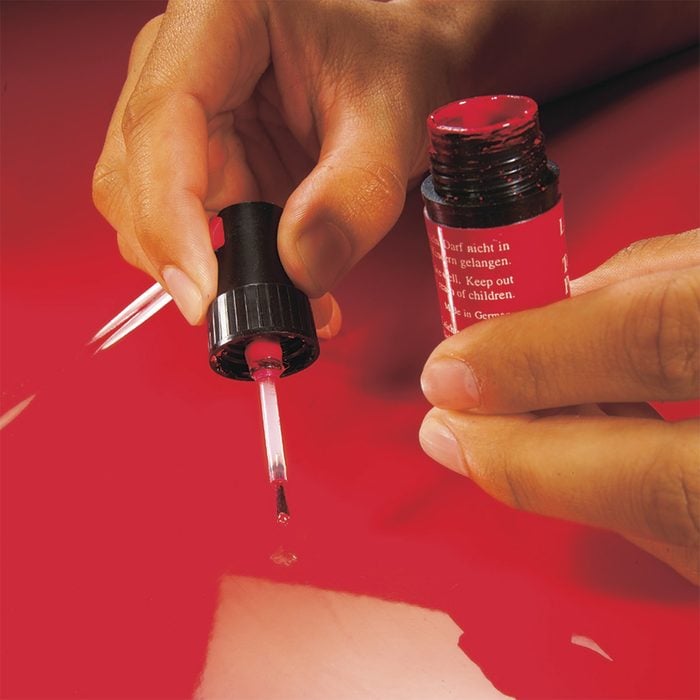 Family Handyman
Family Handyman
Repair Small Paint Chips
Remember that gravel truck traveling at 70 mph that suddenly switched lanes in front of you and bounced a few marble-size rocks off your hood? Now you've got several tiny chips in your paint finish that could grow to quarter-size rust spots in a few years. Take care of the problem right away for less than $10, and you'll save yourself big money later on, not to mention the embarrassment of driving a premature clunker. The fix we show here is for fresh chips that haven't started to rust yet. If you see a rust spot, or have a dent along with your chip, you'll need to do a more challenging fix than we show here. Keep in mind that this repair will be visible under close scrutiny, but if you buy the right touch-up color, it'll be unnoticeable from a few feet away.
32 / 47
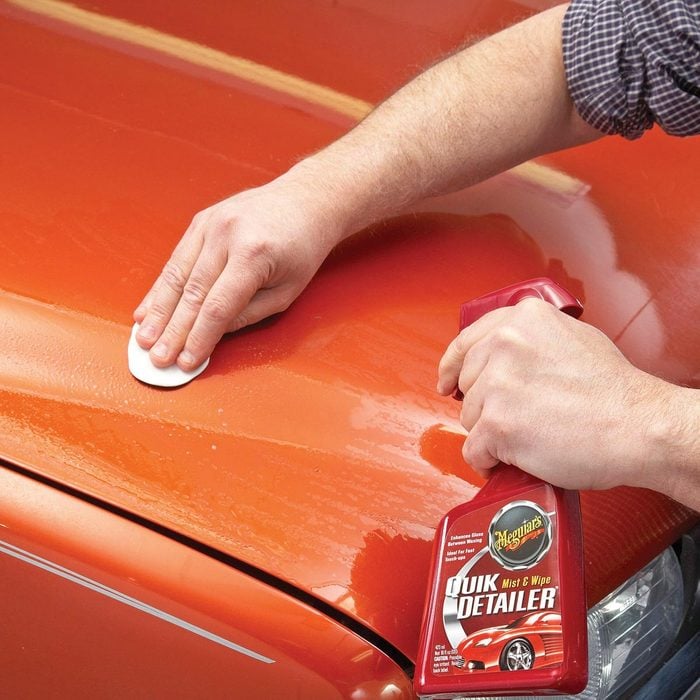 Family Handyman
Family Handyman
Best Way to Clean a Car: Pluck the Finish
A car hurtling down the road at 60 mph becomes a dartboard for any crud in the air. Your vehicle's clear coat deflects some of it but can hold the sharper grit. Washing removes the surface dirt, but clay-barring is the only way to pluck out the embedded stuff. Buy a clay bar kit (one brand is Meguiar's Smooth Surface Clay Kit), which includes a lubricating spray and several pieces of synthetic clay. Prepare the clay by tearing a piece into four sections. Flatten one section into a small pancake in the palm of your hand and rub it over the paint with a back-and-forth motion. Fold the clay against itself, knead it and reflatten until the clay turns gray. Then toss it and use a fresh piece until you remove the "darts" and get a glass-like finish. Learn some more car tricks with these tips on dents, you can fix them yourself.
33 / 47
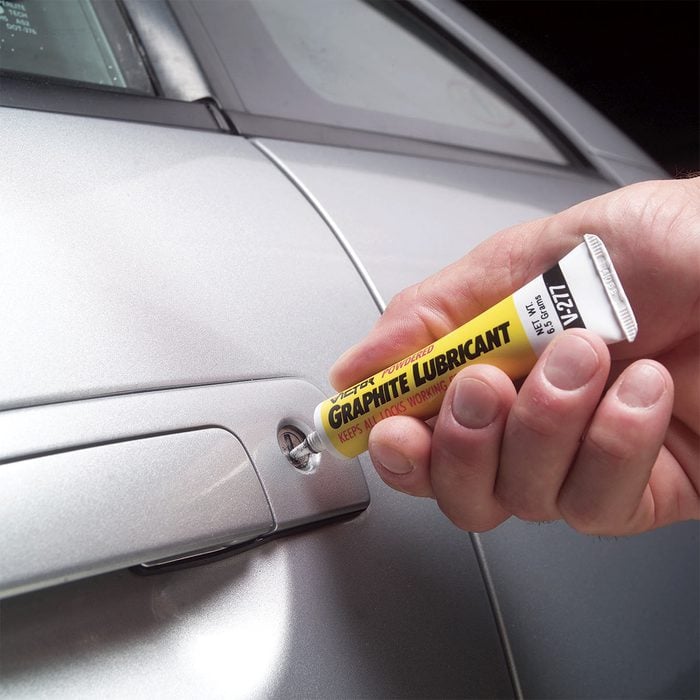
Add Graphite to Door Locks
We don't think much about our door locks until the key breaks off in the cylinder. Keep these delicate mechanisms moving freely with a blast of dry graphite powder. You may need to push the dust protector flap back slightly with a small metal nail file to get at the lock. A quick pump of the tube will dispense enough graphite. Move the lock cylinder with your key several times to work the graphite into the mechanism. Do this to your trunk lock as well. Buy dry graphite powder now on Amazon.
34 / 47
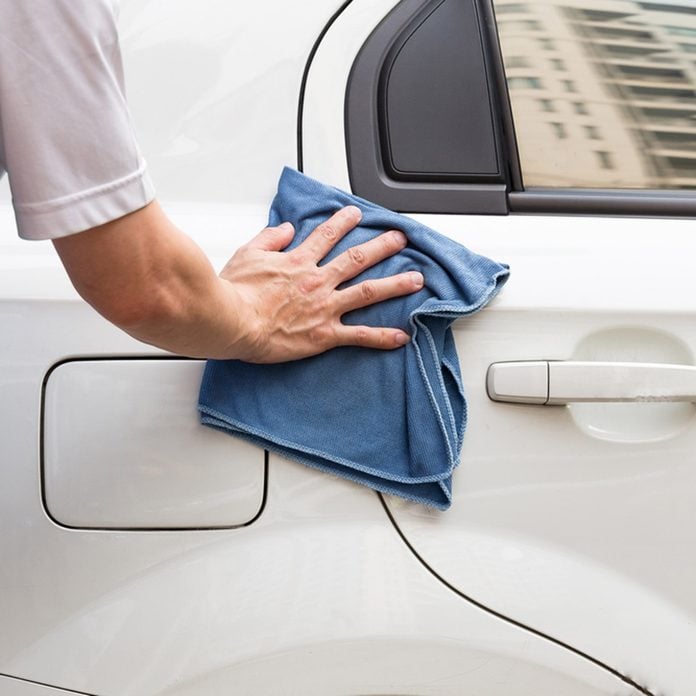 Nok Lek/Shutterstock
Nok Lek/Shutterstock
Forget the Chamois, Dry With a Microfiber Towel
Chamois soak up water, but they don't pick up any grit that's left after rinsing. Instead, they just grind those particles into your paint. A microfiber towel, on the other hand, collects the particles. Rinse the towel in clean water to remove the grit. Then wring and keep drying during your DIY car wash. Here's why microfiber cleaning cloths work so well.
35 / 47
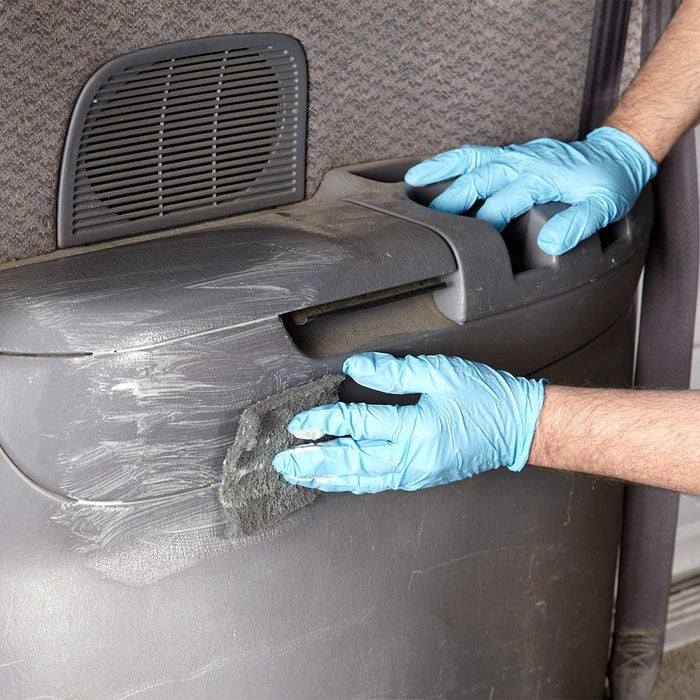
Wash Plastic and Vinyl
Apply SEM Soap to vinyl and plastic surfaces and scrub with a scuff pad. Put extra effort into textured and recessed areas. Wipe the surface with a clean, damp, lint-free cloth and let dry.
36 / 47
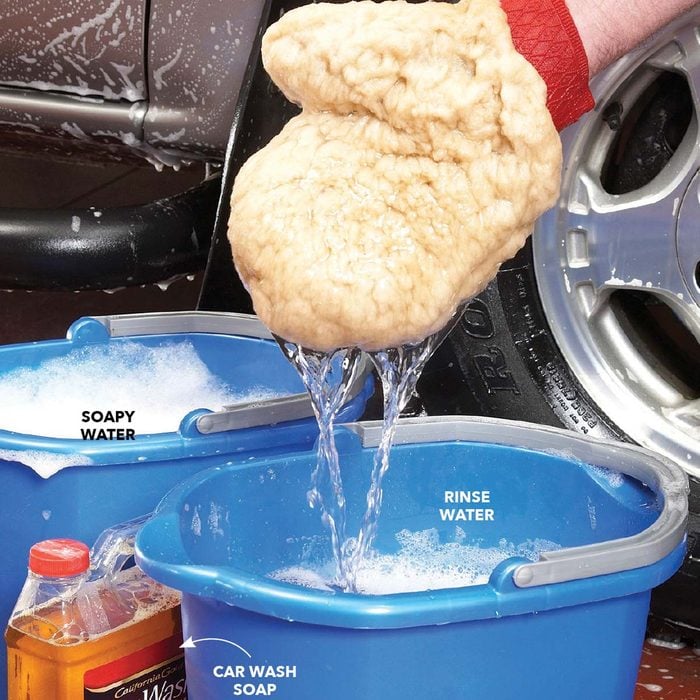 Family Handyman
Family Handyman
Best Way to Wash a Car: Wash With the Right Suds
Even though hand dishwashing liquid is a great degreaser, it's not the thing to use on your vehicle's finish. Yes, it removes dirt, grease and old wax. But it also sucks important oils right out of the paint's finish. Use it repeatedly and you shorten the life of your paint job. Instead of dish soap for a do it yourself car wash, here's one of our best car tricks: use a cleaner formulated for vehicles (available at any auto parts store). Once you've mixed the suds, go one step further—fill a second bucket with clean rinse water. Use it to rinse the wash mitt often. That'll remove most of the road grit from the mitt to prevent scratches. Then throw the mitt in the washing machine to get it completely clean. When you're finished, take a few more steps to protect your car's finish.
37 / 47
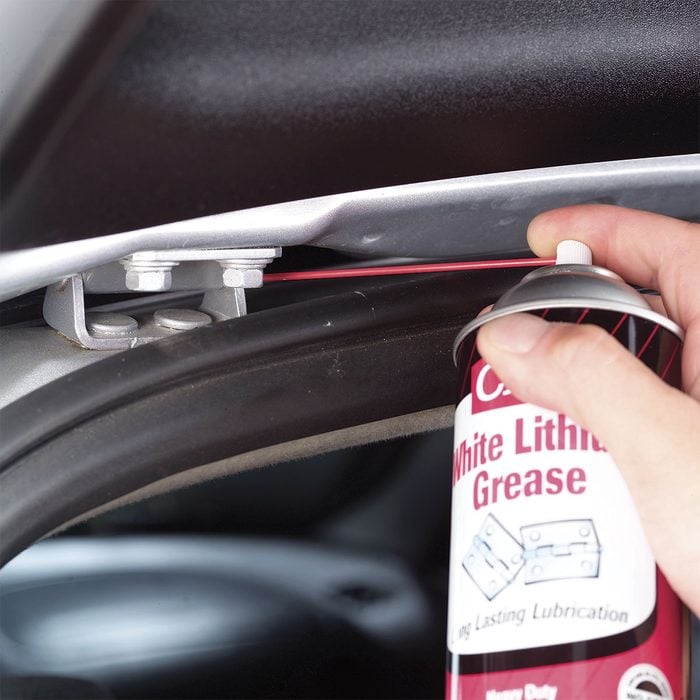
Lubricate Trunk Hinges
Lubricate the trunk hinges using the same method you used for the hood hinge. Don't lubricate the gas struts that slow the trunk movement (you could ruin them).
38 / 47
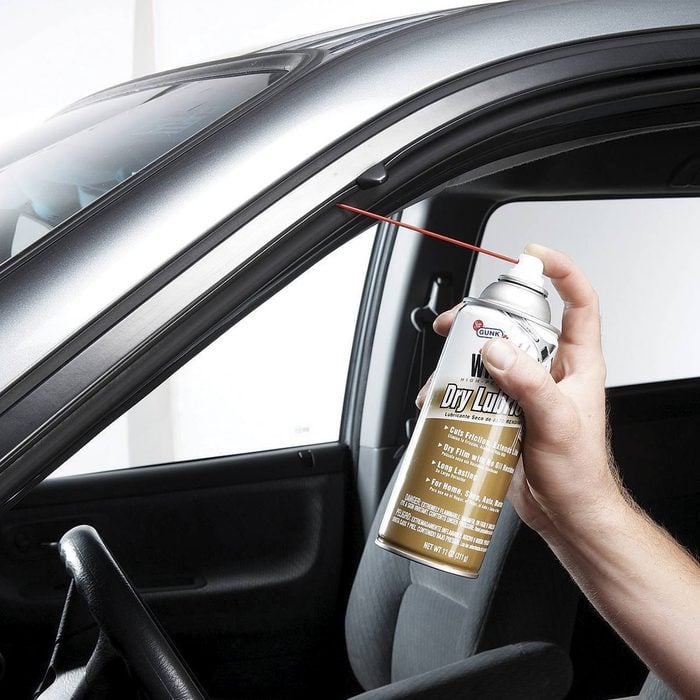
Lubricate Window Tracks
Spray window tracks with silicone spray or dry Teflon for a car detailing tip that makes a big difference. Silicone stays slick even in cold weather, so windows slide smoothly, lessening the wear on your window motors.
39 / 47
 Amazon
Amazon
Buy a Dual-Action Polisher
Detailers wouldn't be caught dead without a dual-action polisher. Don't confuse this incredible tool with a high-speed buffer! Buffers run at much higher speeds and can burn the paint right off your car if you stay in one place too long or press too hard when auto detailing. Polishers are different. They run at lower speeds and oscillate as they rotate. Any DIYer can get the hang of polishing in just a few minutes. Polishing before waxing makes a huge difference, so your investment really pays off.
One more polishing tip from professional detailers—apply the polish to the machine's pad. Then wipe the pad across your paint. That'll prevent all the polish from flinging off the pad as soon as you hit the trigger. Learn how to repair chipped paint yourself.
40 / 47
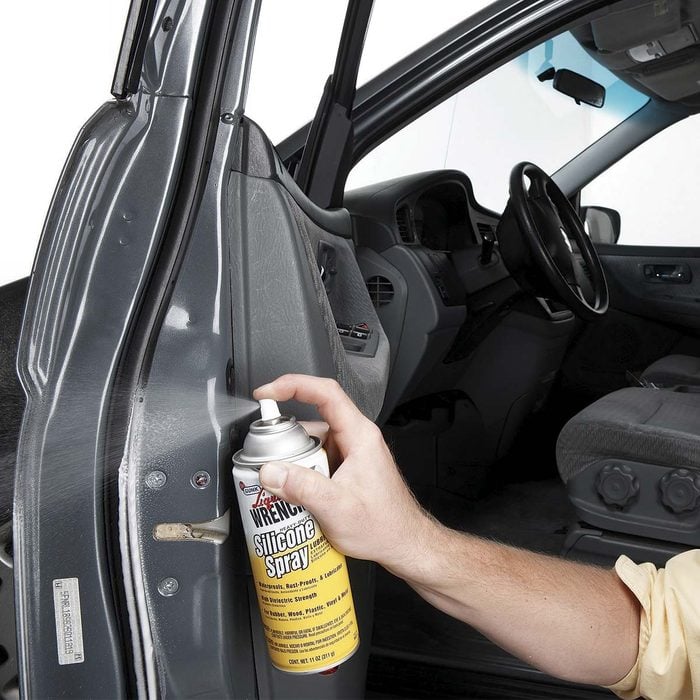
Lubricate Door Weatherstripping
Spray silicone on all weather stripping. Silicone will keep ice from bonding the rubber to the metal doors. That'll make doors open smoother and may even prevent tears in the weather stripping. It's one of the secret car detailing tips.
41 / 47
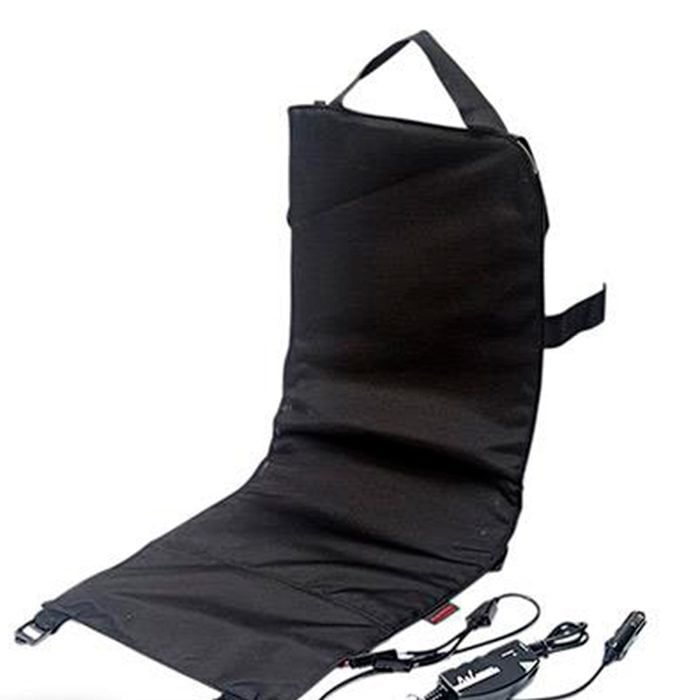
Add a Bun Warmer
If your vehicle didn't come with seat heaters, now's the time to add them. Add-on electric seat heaters fit between your existing seat cushions and the new seat covers and secure with elastic bands and straps. The seat heater control connects to a cigarette lighter or power outlet. The model we show here has an adjustable heat setting and automatic shutoff to prevent battery drain (in case you forget to turn it off).
42 / 47
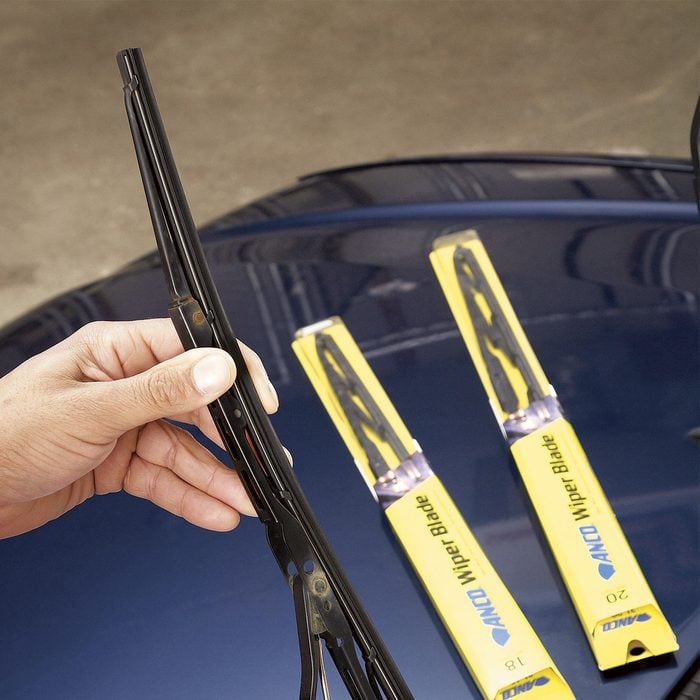
Replace Wiper Blades
It's easy to tell when your blades need replacing. Simply press the washer button and see if your blades wipe clean. If they streak, they're toast. The auto parts store will have lots of economy blades, but go with a name brand instead (ANCO, Trico or Bosch) for your car detailing project. They cost more than economy blades, but their higher-quality rubber wipes better, has better UV protection and lasts longer.
43 / 47
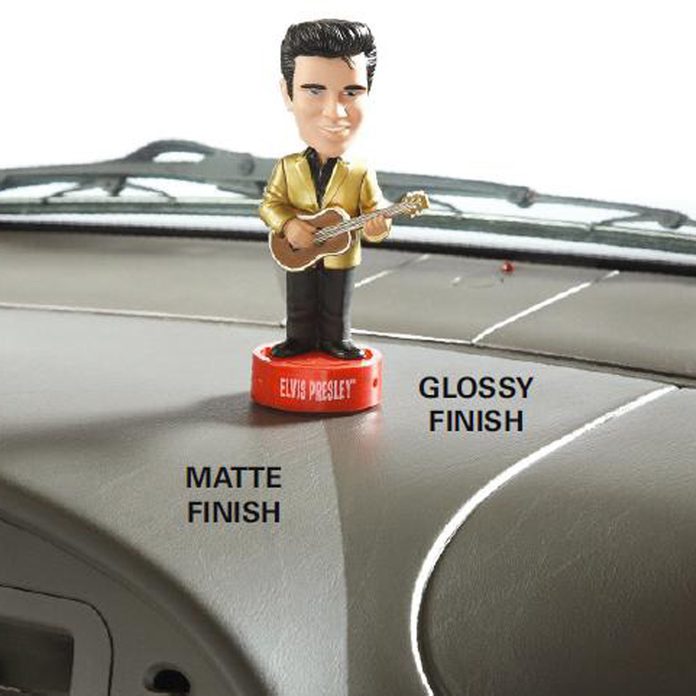 https://create.skyword.com/asset/family-handyman675/201805/1123184/44631/dash-treatment.jpg
https://create.skyword.com/asset/family-handyman675/201805/1123184/44631/dash-treatment.jpg
Use a Non-Silicone Matte Finish Dash and Vinyl Protectant
Silicone dashboard protectant sprays leave a slick film on your dash that actually attracts more dust, so you'll have to clean it more often. Plus, a shiny dash reflects into your windshield. That reflection and glare can reduce your vision, especially at night. That's why professional detailers use non-silicone matte finish protectants when detailing cars. They still look great and they reduce glare. Here are 11 essential tips for keeping your car clean.
44 / 47
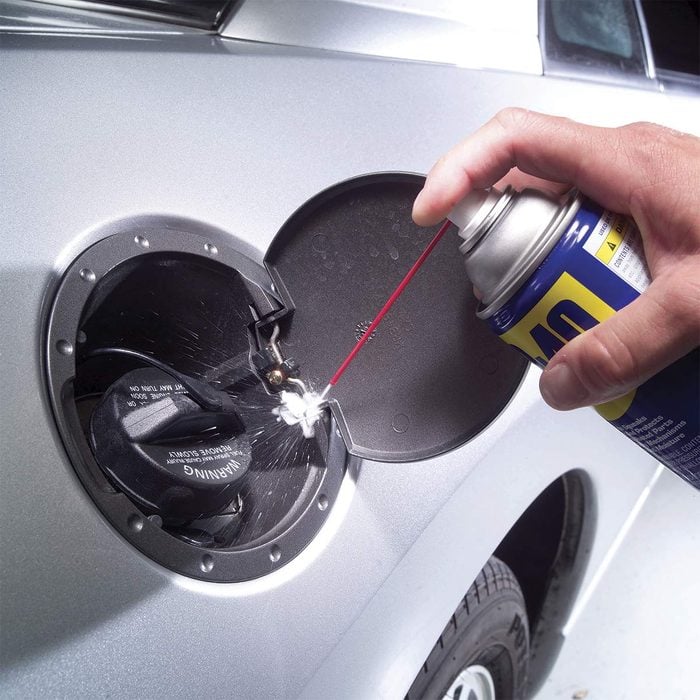 Family Handyman
Family Handyman
WD 40 Uses on Cars: Lubricate the Gas Tank Lid
The gas tank lid really takes abuse, especially in salty environments. Give it a squirt of WD-40 a few times a year to keep it from rusting. Wipe away any excess to keep it from dripping onto your car's finish to prevent further car detailing work.
45 / 47
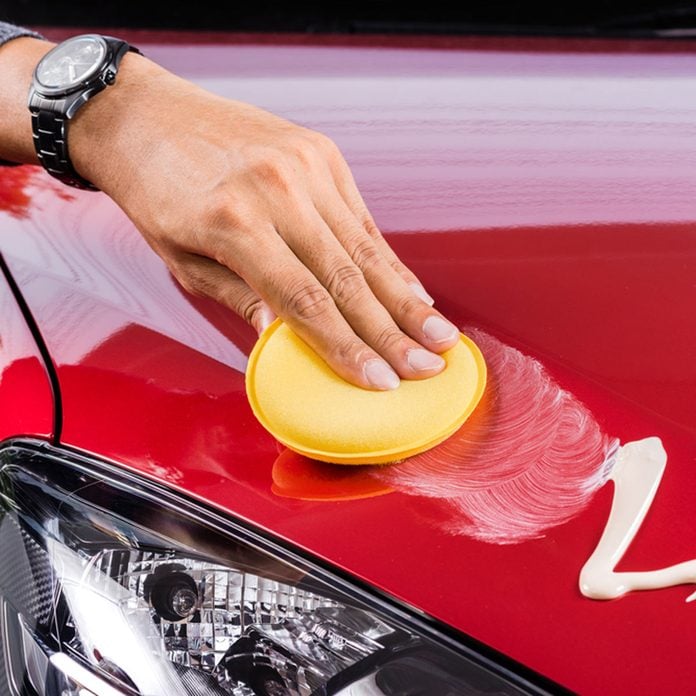 Nor Gal/Shutterstock
Nor Gal/Shutterstock
Use Synthetic Wax
Old style paste waxes look great on antique cars. But they don't produce the same "wet look" as modern synthetic wax, and they don't last as long when detailing cars. When car dealers sell paint sealant, they're really just applying a high-quality synthetic wax, which is something you can do yourself for a fraction of the price. Apply synthetic wax in small sections using a wax applicator sponge. Check out this unusual way to use car wax in the kitchen.
46 / 47
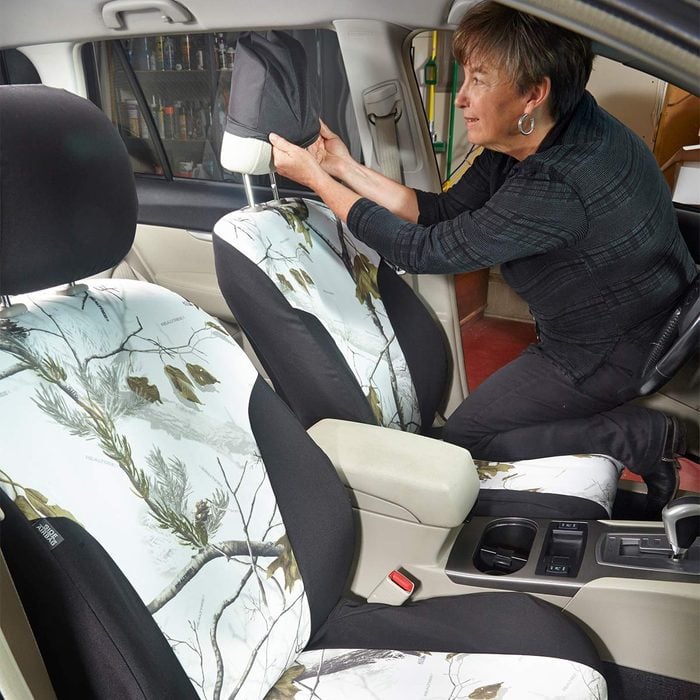
Replace seat covers
Whether you fill your vehicle with construction materials, haul kids and grandkids around or just spill lots of coffee, you know how easy it is for factory seat covers to get grungy. If they're beyond rescuing with an upholstery cleaner and you want to spruce up your vehicle's interior, you have only three car detailing options: Pay a professional automotive upholsterer to reupholster your seats (well over $1,000), buy used seats from a junkyard, or buy and install seat covers yourself. Aftermarket seat covers cost as little as $50 per seat for a universal-fit style or about $150 per seat for top-of-the- line custom-fit covers. The installation is similar across makes and models. The job takes about two hours for front and rear seats. The only tools you'll need are a wire coat hanger and some tape to fish the straps under plastic trim pieces (if equipped). Everything else is included with the seat covers.
47 / 47
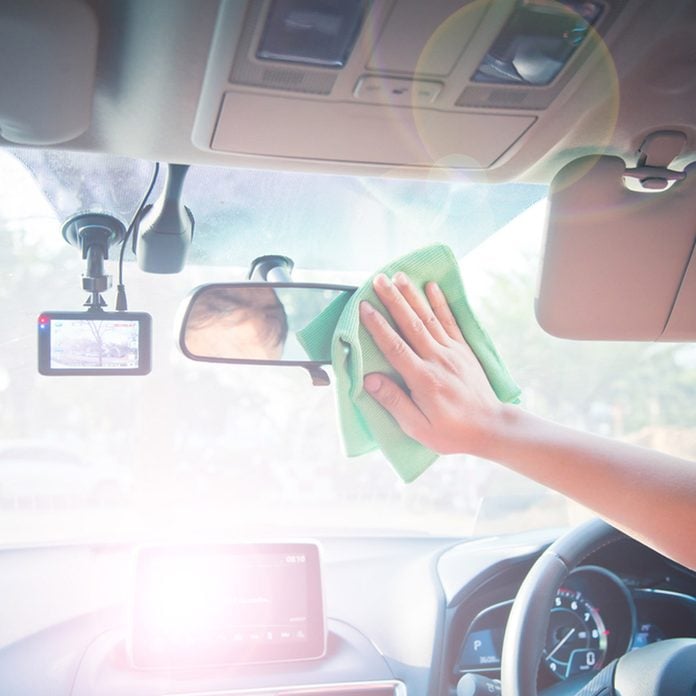 PATIWIT HONGSANG/Shutterstock
PATIWIT HONGSANG/Shutterstock
Finish With the Glass
If you cleaned the inside of your windows before you cleaned the dash and applied vinyl protectant, you'll just have to clean them again. That's why detailers save glass cleaning until the very end. Cleaning the windows at this point removes all cleaning and vinyl treatment overspray and leaves you with sparkling clean windows. When it's time to clean the windows on your house, don't forget these 10 window cleaning tips from a pro.
Every product is independently selected by our editors. If you buy something through our links, we may earn an affiliate commission.
Originally Published: July 31, 2019
Sign up for DIY projects sent right to your inbox
Complete DIY projects like a pro! Sign up for our newsletter!

Subscribe & SAVE 1 Year Subscription
for only $10!
Best Car Wash and Auto Detailing Near Me
Source: https://www.familyhandyman.com/list/36-diy-car-detailing-tips/
0 Response to "Best Car Wash and Auto Detailing Near Me"
Post a Comment